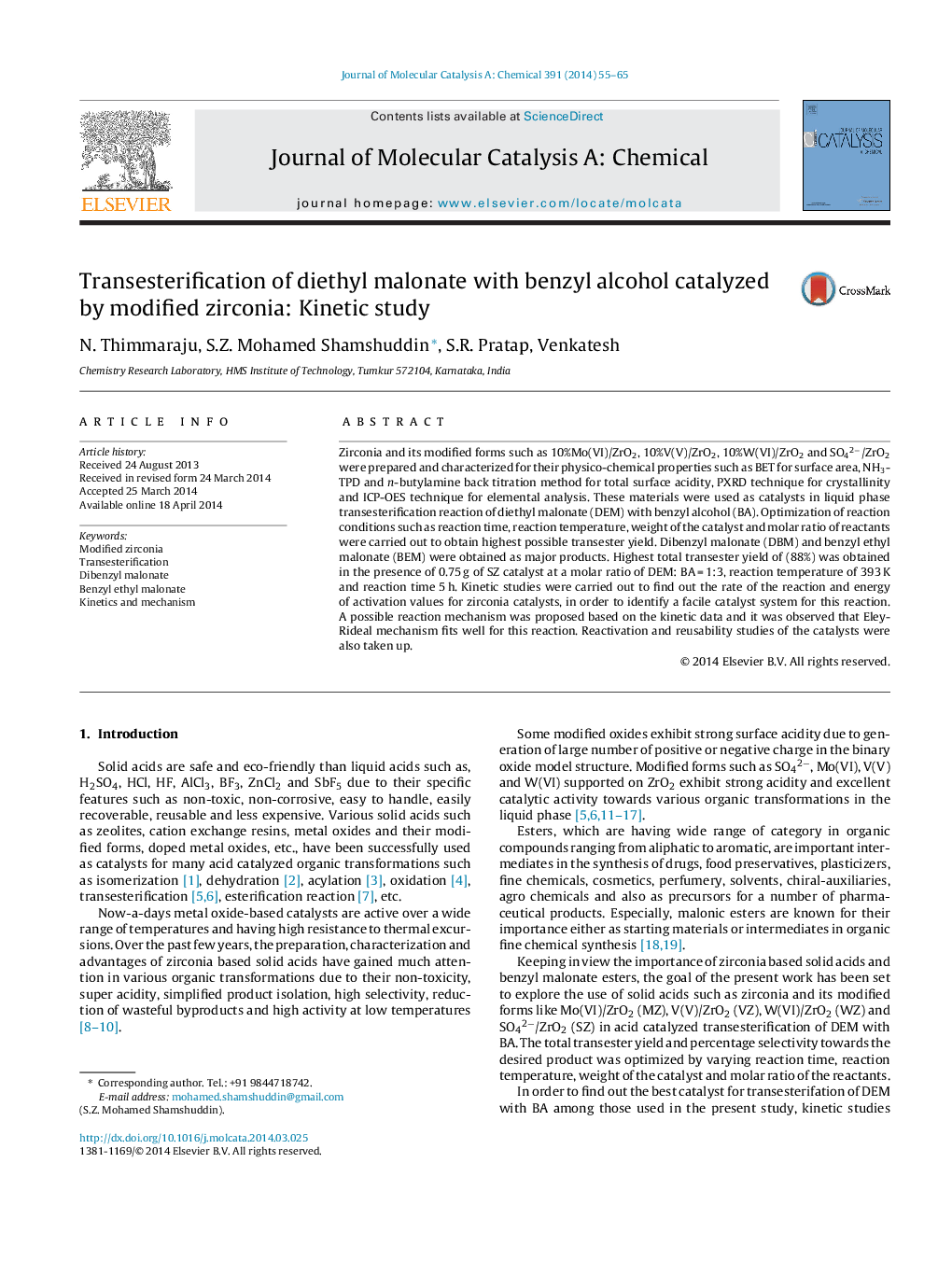| Article ID | Journal | Published Year | Pages | File Type |
|---|---|---|---|---|
| 65107 | Journal of Molecular Catalysis A: Chemical | 2014 | 11 Pages |
•Solids were prepared and characterized by BET, NH3-TPD, PXRD and ICP-OES.•Transesterification of diethyl malonate with benzyl alcohol was carried out.•Total surface acidity, crystallinity and the catalytic activity of solid acids were correlative.•The selectivity of the products is related to the strength of acid sites.•The solid acids can be reused up to 5 reaction cycles.•Transesterification of DEM and BA followed an Eley-Rideal mechanism.
Zirconia and its modified forms such as 10%Mo(VI)/ZrO2, 10%V(V)/ZrO2, 10%W(VI)/ZrO2 and SO42−/ZrO2 were prepared and characterized for their physico-chemical properties such as BET for surface area, NH3-TPD and n-butylamine back titration method for total surface acidity, PXRD technique for crystallinity and ICP-OES technique for elemental analysis. These materials were used as catalysts in liquid phase transesterification reaction of diethyl malonate (DEM) with benzyl alcohol (BA). Optimization of reaction conditions such as reaction time, reaction temperature, weight of the catalyst and molar ratio of reactants were carried out to obtain highest possible transester yield. Dibenzyl malonate (DBM) and benzyl ethyl malonate (BEM) were obtained as major products. Highest total transester yield of (88%) was obtained in the presence of 0.75 g of SZ catalyst at a molar ratio of DEM: BA = 1:3, reaction temperature of 393 K and reaction time 5 h. Kinetic studies were carried out to find out the rate of the reaction and energy of activation values for zirconia catalysts, in order to identify a facile catalyst system for this reaction. A possible reaction mechanism was proposed based on the kinetic data and it was observed that Eley-Rideal mechanism fits well for this reaction. Reactivation and reusability studies of the catalysts were also taken up.
Graphical abstractTransesterification of DEM with BA in presence of solid acid catalyst [Mo(VI)/ZrO2, V(V)/ZrO2, W(VI)/ZrO2 and SO42−/ZrO2].Figure optionsDownload full-size imageDownload high-quality image (35 K)Download as PowerPoint slide
